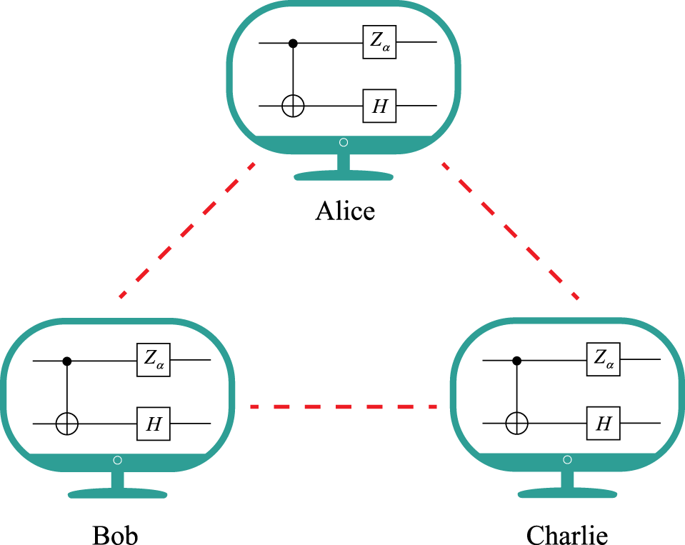npj Quantum Information ( IF 6.6 ) Pub Date : 2019-10-04 , DOI: 10.1038/s41534-019-0200-9 You Zhou , Qi Zhao , Xiao Yuan , Xiongfeng Ma

|
Recently, there are tremendous developments on the number of controllable qubits in several quantum computing systems. For these implementations, it is crucial to determine the entanglement structure of the prepared multipartite quantum state as a basis for further information processing tasks. In reality, evaluation of a multipartite state is in general a very challenging task owing to the exponential increase of the Hilbert space with respect to the number of system components. In this work, we propose a systematic method using very few local measurements to detect multipartite entanglement structures based on the graph state—one of the most important classes of quantum states for quantum information processing. Thanks to the close connection between the Schmidt coefficient and quantum entropy in graph states, we develop a family of efficient witness operators to detect the entanglement between subsystems under any partitions and hence the entanglement intactness. We show that the number of local measurements equals to the chromatic number of the underlying graph, which is a constant number, independent of the number of qubits. In reality, the optimization problem involved in the witnesses can be challenging with large system size. For several widely used graph states, such as 1-D and 2-D cluster states and the Greenberger–Horne–Zeilinger state, by taking advantage of the area law of entanglement entropy, we derive analytical solutions for the witnesses, which only employ two local measurements. Our method offers a standard tool for entanglement-structure detection to benchmark multipartite quantum systems.
中文翻译:

用最少的资源检测多部分纠缠结构
近来,在几个量子计算系统中可控量子位的数量有了巨大的发展。对于这些实现,至关重要的是确定准备的多粒子量子态的纠缠结构,作为进一步信息处理任务的基础。实际上,由于希尔伯特空间相对于系统组件的数量呈指数增长,因此多部分状态的评估通常是一项非常具有挑战性的任务。在这项工作中,我们提出了一种系统的方法,该方法使用很少的局部测量来基于图状态(用于量子信息处理的最重要的一类量子状态)来检测多粒子纠缠结构。由于图态中的施密特系数和量子熵之间的紧密联系,我们开发了一个有效的见证运算符系列,以检测任何分区下子系统之间的纠缠,从而检测纠缠的完整性。我们表明,局部测量的数量等于基础图的色度数,该色度数是一个常数,与量子位的数量无关。实际上,见证者所涉及的优化问题对于大型系统而言可能是具有挑战性的。对于一些广泛使用的图状态,例如一维和二维簇状态以及格林伯格-霍恩-泽林格状态,我们利用纠缠熵的面积定律,为证人推导了解析解决方案,该解决方案仅使用了两个本地测量。我们的方法提供了用于纠缠结构检测的标准工具,以对多部分量子系统进行基准测试。











































 京公网安备 11010802027423号
京公网安备 11010802027423号